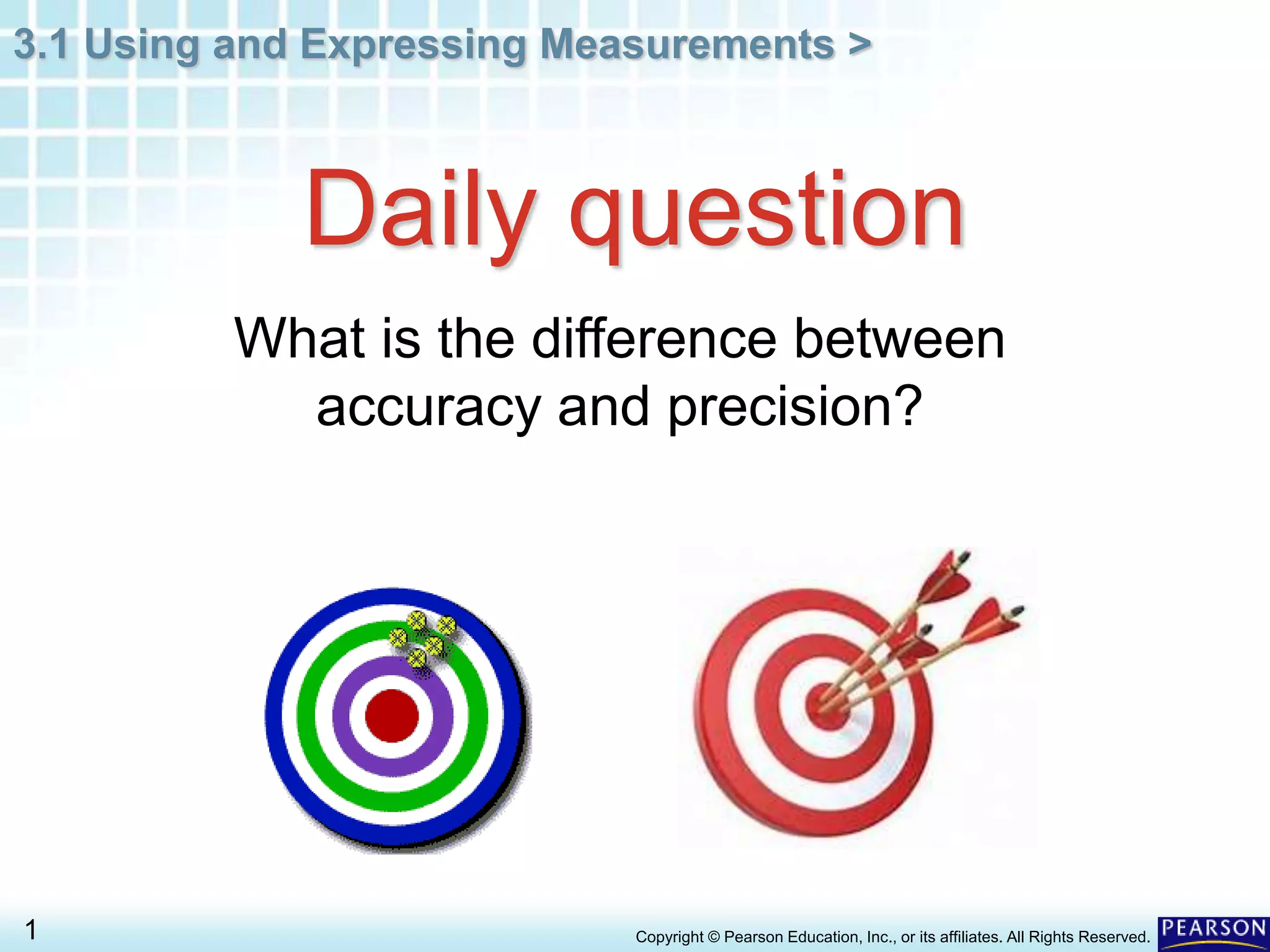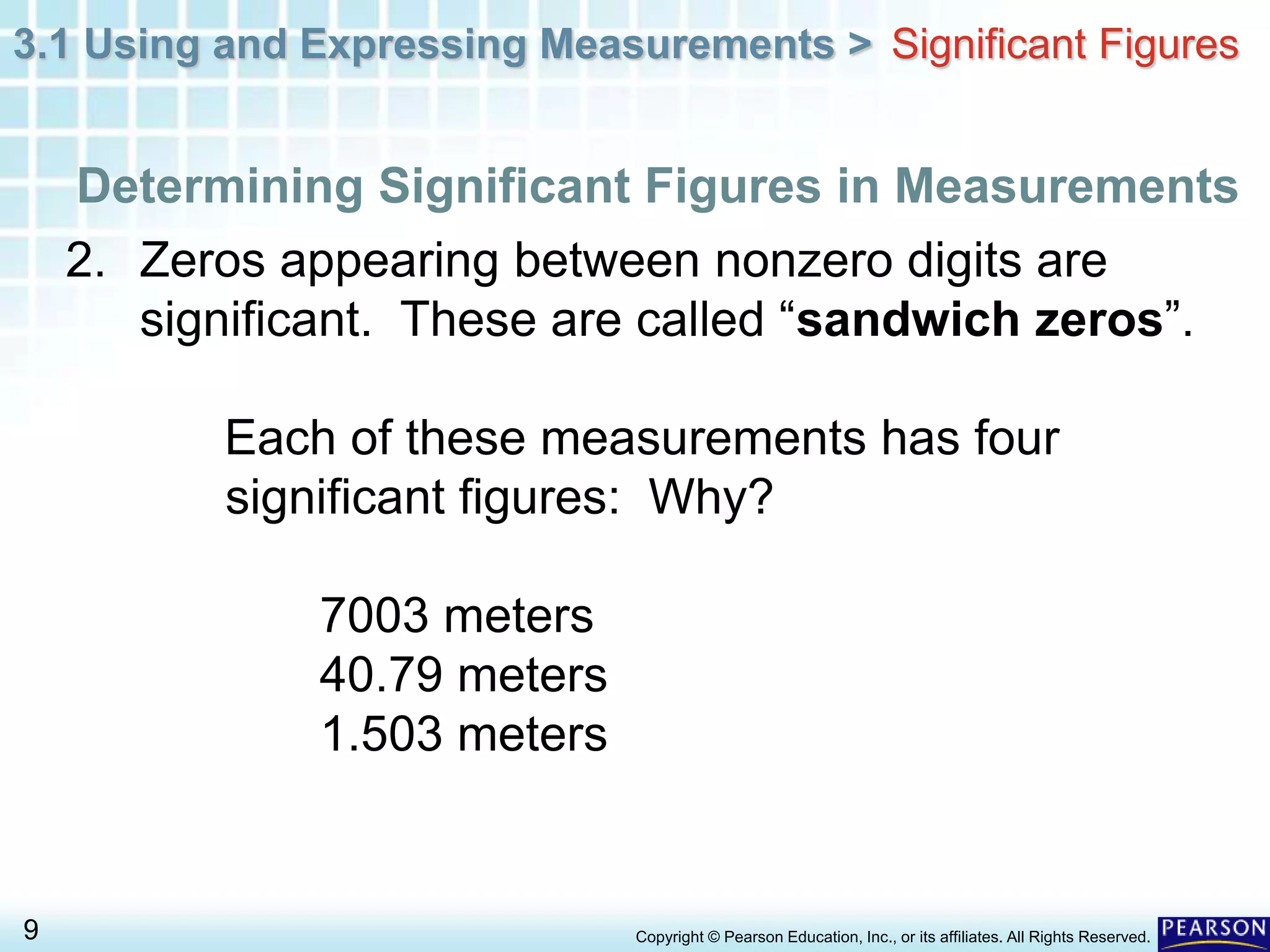The document discusses significant figures in scientific measurements. It defines significant figures as the digits in a measurement that are known with certainty plus one estimated digit. The document outlines four rules for determining significant figures: 1) non-zero digits are always significant, 2) "sandwich" zeros between non-zero digits are significant, 3) trailing zeros are only significant if there is a decimal point, and 4) counting and equivalents have unlimited significant figures. The number of significant figures must be considered when performing calculations to ensure the answer is correctly rounded.





































